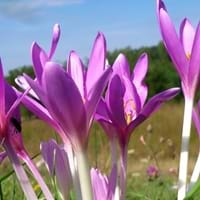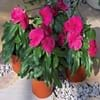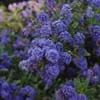Life Span
Perennial
Perennial
Type
Shrub
Bulb or Corm or Tuber
Origin
Russia/Siberia, China
Mediterranean, Turkey
Types
Dwarf Siberian Peashrub, Sutherland Peashrub, Weeping Siberian Peashrub
Not available
Habitat
Forest edges, gully slopes, Open Forest, Riverbanks, Sandy areas
Lawn, meadows, Sunny Edge, Woodland Garden
USDA Hardiness Zone
2-8
6-9
Sunset Zone
A1, A2, A3, 1a, 1b, 2a, 2b, 3a, 3b, 4, 5, 6, 7, 8, 9, 10, 12
21,22
Habit
Narrow Upright/Fastigiate
Clump-Forming
Flower Color
Yellow
Fuchsia, Rose
Flower Color Modifier
Not Available
Bicolor
Fruit Color
Brown
Not Available
Leaf Color in Spring
Light Green
Green
Leaf Color in Summer
Light Green
Light Green
Leaf Color in Fall
Light Green, Light Yellow
Several shades of Green
Leaf Color in Winter
Not Available
Light Green
Leaf Shape
Pinnate
Long Broad
Plant Season
Spring
Spring, Fall
Sunlight
Full Sun
Full Sun, Partial Sun
Type of Soil
Clay, Loam
Loam
The pH of Soil
Acidic, Neutral, Alkaline
Acidic, Neutral
Soil Drainage
Well drained
Well drained
Bloom Time
Spring
Late Summer, Early Fall
Tolerances
Drought, Salt
Drought
Where to Plant?
Ground
Container, Ground, Pot
How to Plant?
Cuttings, Layering, Seedlings
Corms or bulbs, Seedlings
Plant Maintenance
Low
Low
Watering Requirements
Keep the ground moist but not water-logged, occasional watering once established
Do Not over Water, Keep the ground moist but not water-logged
In Summer
Moderate
Lots of watering
In Spring
Ample Water
Moderate
In Winter
Average Water
Average Water
Soil pH
Acidic, Neutral, Alkaline
Acidic, Neutral
Soil Type
Clay, Loam
Loam
Soil Drainage Capacity
Well drained
Well drained
Sun Exposure
Full Sun
Full Sun, Partial Sun
Pruning
Remove dead branches, Remove dead or diseased plant parts
Cut or pinch the stems, Remove damaged leaves, Remove dead flowers, Remove dead leaves
Fertilizers
fertilize in spring
All-Purpose Liquid Fertilizer, fertilize in summer
Pests and Diseases
blister beetles, Septoria leaf spot, stem decay
Slugs
Plant Tolerance
Drought, Salt
Drought
Flower Petal Number
Single
Single
Foliage Texture
Fine
Coarse
Foliage Sheen
Matte
Not Available
Attracts
Bees, Hummingbirds
Bees, Butterflies
Allergy
Diarrhea, Vomiting
poisonous if ingested, Toxic if not prepared properly
Aesthetic Uses
Not Used For Aesthetic Purpose
Beautification, Cottage Garden, Showy Purposes
Beauty Benefits
used as a dye
Removes pimples
Environmental Uses
Erosion control, Fixes Nitrogen, Food for animals, Shelter for wildlife, Windbreak
Air purification
Medicinal Uses
Cancer, Dysmenorrhea, Gynaecological
Arthritis, Gout, Itching
Part of Plant Used
Leaves, Seeds
Bulbs, Flowers, Seeds
Other Uses
Fibre, For making oil, Shelterbelt, Used as a dye, Used for making informal hedge
Used as Ornamental plant, Used for its medicinal properties
Used As Indoor Plant
No
No
Used As Outdoor Plant
Yes
Yes
Garden Design
Hedges, Mixed Border, Screening, Wind Break
Alpine, Container, Mixed Border, Rock Garden / Wall
Botanical Name
CARAGANA arborescens
Colchicum autumnale
Common Name
Siberian peashrub, Siberian pea-tree, caragana
Autumn Crocus, meadow saffron, naked lady
In Hindi
Siberian peashrub
शरद ऋतु का पौधा
In German
Gemeiner Erbsenstrauch
Herbstzeitlose
In French
Caraganier de Sibérie
colchique d'automne
In Spanish
Siberian Peashrub
cólquico
In Greek
Siberian Peashrub
φθινόπωρο κρόκος
In Portuguese
Siberian peashrub
aftomn gema
In Polish
Karagana syberyjska
aftomn żółtka
In Latin
Siberian Peashrub
aftomn vitellus
Phylum
Magnoliophyta
Magnoliophyta
Class
Magnoliopsida
Liliopsida
Family
Fabaceae
Liliaceae
Clade
Angiosperms, Eudicots, Rosids
Angiosperms, Monocots
Tribe
Not Available
Colchiceae
Subfamily
Not Available
Not Available
Number of Species
Not Available
Season and Care of Siberian Peashrub and Autumn Crocus
Season and care of Siberian Peashrub and Autumn Crocus is important to know. While considering everything about Siberian Peashrub and Autumn Crocus Care, growing season is an essential factor. Siberian Peashrub season is Spring and Autumn Crocus season is Spring. The type of soil for Siberian Peashrub is Clay, Loam and for Autumn Crocus is Loam while the PH of soil for Siberian Peashrub is Acidic, Neutral, Alkaline and for Autumn Crocus is Acidic, Neutral.
Siberian Peashrub and Autumn Crocus Physical Information
Siberian Peashrub and Autumn Crocus physical information is very important for comparison. Siberian Peashrub height is 460.00 cm and width 300.00 cm whereas Autumn Crocus height is 7.60 cm and width 7.60 cm. The color specification of Siberian Peashrub and Autumn Crocus are as follows:
Siberian Peashrub flower color: Yellow
Siberian Peashrub leaf color: Light Green
Autumn Crocus flower color: Fuchsia and Rose
- Autumn Crocus leaf color: Green
Care of Siberian Peashrub and Autumn Crocus
Care of Siberian Peashrub and Autumn Crocus include pruning, fertilizers, watering etc. Siberian Peashrub pruning is done Remove dead branches and Remove dead or diseased plant parts and Autumn Crocus pruning is done Cut or pinch the stems, Remove damaged leaves, Remove dead flowers and Remove dead leaves. In summer Siberian Peashrub needs Moderate and in winter, it needs Average Water. Whereas, in summer Autumn Crocus needs Lots of watering and in winter, it needs Average Water.





